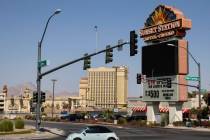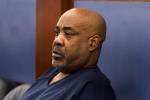Federal mortgage aid effort struggles
WASHINGTON -- Nearly half of the 1.3 million homeowners who enrolled in the Obama administration's flagship mortgage-relief program have fallen out.
The program is intended to help those at risk of foreclosure by lowering their monthly mortgage payments. Friday's report from the Treasury Department suggests the $75 billion government effort is failing to slow the tide of foreclosures in the United States, economists say.
More than 2.3 million homes have been repossessed by lenders since the recession began in December 2007, according to foreclosure listing service RealtyTrac Inc. Economists expect the number of foreclosures to grow well into next year.
"The government program as currently structured is petering out. It is taking in fewer homeowners, more are dropping out and fewer people are ending up in permanent modifications," said Mark Zandi, chief economist at Moody's Analytics.
Besides forcing people from their homes, foreclosures and distressed home sales have pushed down on home values and crippled the broader housing industry. They have made it difficult for homebuilders to compete with the depressed prices and discouraged potential sellers from putting their homes on the market.
Approximately 630,000 people who had tried to get their monthly mortgage payments lowered through the government program have been cut loose through July, according to the Treasury report. That's about 48 percent of the those who had enrolled since March 2009. And it is up from more than 40 percent through June.
But 421,804, or roughly 32 percent of those who started the program, have received permanent loan modifications and are making payments on time.
Ian Hirsch, president of Fortress Credit Services in Las Vegas, said Obama's plan is good -- if government had away to force banks to carry out the plan. Banks are supposed to bring mortgage payments to 31 percent of income, but they often don't do that, he said.
"I find banks have written down the mortgage internally so they can show a profit by selling at a loss in foreclosure," Hirsch said. "The other thing is they need to look at the person's situation. Frankly, unless they find a way to get the mortgage down to current value or at least within a stone's throw, at least where people can see daylight, people are going to walk away."
RealtyTrac reported that the number of U.S. homes lost to foreclosure surged in July to 92,858, up 9 percent from June. The pace of repossessions has been increasing and the nation is now on track to having more than 1 million homes lost to foreclosure by the end of the year. That would eclipse the more than 900,000 repossessed in 2009, the firm says.
Lenders have historically taken over about 100,000 homes a year, according to RealtyTrac.
Zandi said the government effort will likely end up helping about 500,000 homeowners lower their monthly payments permanently. That's a small percentage of the number of people who have already lost their homes to foreclosure or distressed sales like short sales -- when lenders let homeowners sell for less than they owe on their mortgages. He predicts 1.5 million foreclosures or short sales in 2011.
"We still have a lot more foreclosures to come and further home price declines," Zandi said.
He predicted home prices would drop an additional 5 percent by next spring.
Review-Journal writer Hubble Smith contributed to this report.






















